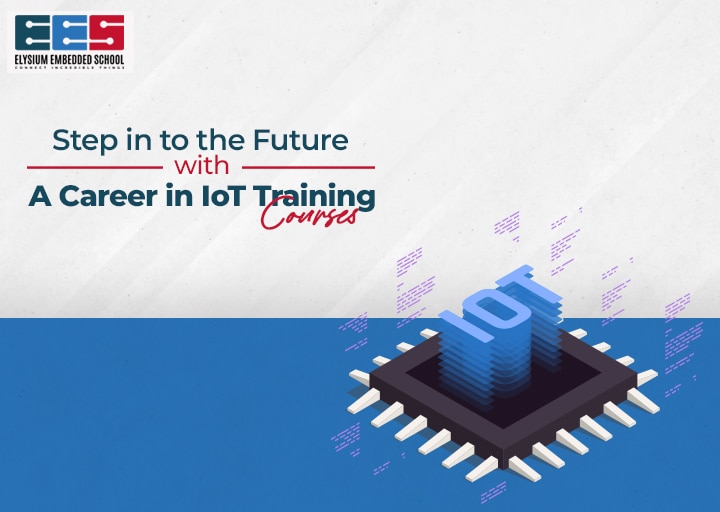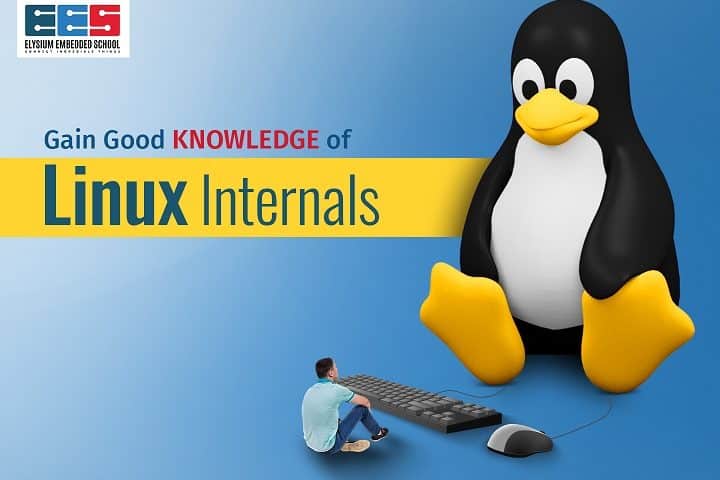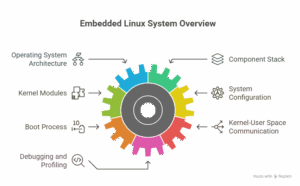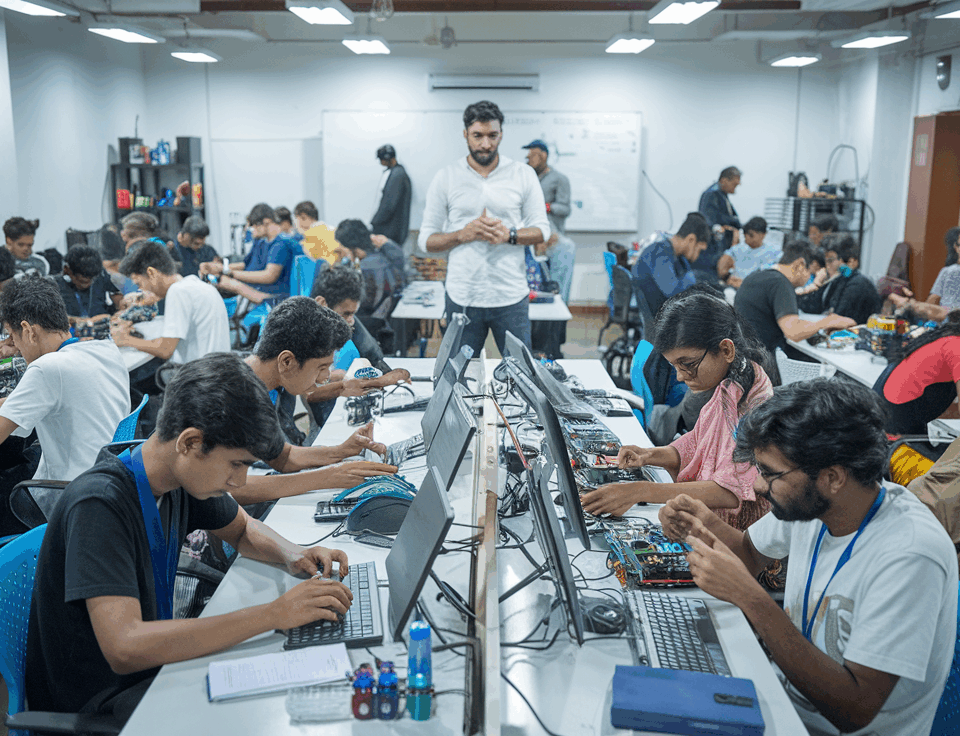
Get Deep Knowledge in Advance Microcontroller Training Course
January 5, 2023
Step into the Future with a Career in IoT Training courses
January 25, 2023Linux systems have become an integral part of modern technology, powering everything from smartphones and tablets to smart TVs, industrial robots, and automotive infotainment systems. As a result, there is a growing industry-wide demand for skilled embedded systems engineers who are proficient in Linux development. The Linux Certification Courses are specifically designed to address this need, offering a structured learning path that covers Linux internals, device driver development, and real-world debugging techniques. These courses not only provide theoretical foundations but also deliver the practical, hands-on experience necessary to work with embedded Linux environments confidently.
With the rapid evolution of smart and connected devices, industries are increasingly seeking engineers who can design, customize, and maintain Linux-based embedded systems. Through Linux Certification Courses, learners are introduced to the full lifecycle of embedded development — from understanding the boot process and configuring kernels to building root filesystems and integrating open-source components. These skills are essential for engineers aiming to build scalable, efficient systems that meet industry-specific performance and security requirements.
Moreover, this certification is not just for entry-level learners; it is equally valuable for professionals looking to upskill or shift into embedded systems roles. The course equips learners with an in-depth understanding of Linux architecture, memory management, process scheduling, and communication between kernel and user space. As embedded devices become more complex and interconnected, engineers who complete Linux Certification Courses are better prepared to handle integration challenges, optimize system performance, and ensure product reliability — all of which are critical in the competitive tech landscape.

Table of Contents
Embedded Linux Operating System Architecture
Understanding the architecture of the Embedded Linux operating system is fundamental in Linux Certification Courses. This structure includes the kernel, device drivers, system libraries, and user applications, all interacting to control hardware and manage processes. A deep knowledge of this layered architecture helps learners design more efficient, scalable, and secure embedded solutions. Through structured modules, students explore how each component functions and how they come together to create a robust embedded system.
Linux-Based Embedded System Component Stack
The component stack in a Linux-based embedded system includes bootloaders, the kernel, middleware, libraries, and application layers. Linux Certification Courses provide a comprehensive overview of this stack, teaching students how to configure and integrate each layer to meet specific system requirements. Understanding this stack allows learners to customize systems for industries like automotive, medical, and industrial automation where embedded Linux is prevalent.
Linux Kernel Modules
Kernel modules are pieces of code that can be loaded into the Linux kernel at runtime to add or extend functionality. In Linux Certification Courses, students gain hands-on experience in writing, compiling, and inserting these modules into the kernel. This dynamic ability is crucial in embedded systems where hardware configurations frequently change, and efficient system updates are essential. Learners also explore real-world scenarios such as adding support for new hardware without recompiling the entire kernel.
System Configuration and the Boot Process
The system configuration and boot process are critical aspects of any embedded Linux setup. Linux Certification Courses teach students how to configure system files, scripts, and settings that initialize the Linux OS. The curriculum covers bootloaders like U-Boot, understanding init systems, and preparing the root filesystem. These skills help learners manage startup sequences efficiently, leading to faster boot times and more reliable system performance in embedded applications.
Communication Between Kernel Space and User Space
Efficient communication between kernel space and user space is vital for robust system operation. Through Linux Certification Courses, students learn about mechanisms such as system calls, ioctl, procfs, and netlink sockets that facilitate this interaction. Mastering these techniques enables developers to create smooth, controlled data exchanges between applications and hardware drivers—an essential competency for embedded system development.
System Debugging and Profiling
Debugging and profiling are essential for identifying performance bottlenecks and ensuring system stability. Linux Certification Courses provide in-depth training on using tools like GDB, strace, ftrace, perf, and system logs to analyze both kernel-level and user-level issues. Learners become proficient in detecting memory leaks, optimizing code execution, and ensuring that their embedded Linux systems run efficiently under various conditions.
Why should you learn an embedded Linux certification course?
Developing a kernel from scratch for hardware is very difficult as it requires extensive hardware and software coding knowledge. However, embedded Linux training may be just what you need to reach your goals. Let’s see why you should learn embedded Linux.
1. It’s open-source
Linux is open source. This means that the public can view, edit, and contribute. Thanks to this feature, Linux training puts you in control of your product development. Proprietary operating systems are vendor dependent. For example, if we need to fix a bug, we must work with the vendor. However, their priorities can be very different from yours, and you need more control over how to solve problems. Because Linux is open source, your success is entirely up to you, and you have full control over product development. This also allows you to leverage the work of others and find great solutions in the open-source community.
2. It’s royalty-free
“Free” is a term used to describe intellectual property that can be used without paying a fee. This is why people are drawn to using embedded Linux. Note, however, that other costs are to be expected when using Linux due to caution. It cannot be expected to operate independently. If you want to understand this better, think of Linux as a car. The actual cost of the vehicle includes not only that but also insurance, gas, maintenance, and repair costs. They fix bugs, build drivers and pay developers to develop applications in the IT industry. However, there are no license fees yet so you can save a lot of money.
3. Linux supports all
Whether it’s software tools or hardware, Linux supports it. It’s supported on Linux, in case it crosses anyone’s mind. Speaking of hardware, Linux probably supports that platform. If you develop common embedded platforms like SoMs and SoCs, Linux probably supports it. The same applies to X86, PowerPC, MIPS, ARM, etc. The only notable exception is custom software, where Linux drivers can be developed to support your hardware. Linux also provides support for programming languages, services, libraries, and tools for embedded systems.
4. A lot of people use it.
Since so many people use Linux, many developers have seen the source code and are familiar with it. If you’re using embedded Linux Training for your embedded system, you can easily find help from developers who are familiar with it. Since Linux has been around for decades, many bugs have been solved and fixed. Even when new bugs appear, they are usually resolved quickly. This is especially true when using common hardware platforms and working with experienced developers who have faced similar issues on previous projects.
Devices that use Embedded Linux Internals
This training will definitely apply to more and more devices in the future while getting started with embedded Linux. This is what has happened in the last ten years. Ten years ago, embedded processors were limited and didn’t have the same capabilities as today’s processors. As a result, embedded software engineering is constantly evolving, and you can expect more exciting things to come.
Over the past decade, embedded Linux has developed smart toys, wireless routers, robots, TVs, and smartwatches. Multimedia devices such as cameras and video recorders, digital storage devices, and consumer electronics such as tablets and phones should be added to this list. In addition, embedded Linux is used in automobiles, machine controls, medical devices, navigation, industrial automation, and even spacecraft flight software. However, the most famous example of embedded Linux is the Android operating system developed by Google.
Comprehensive Understanding of Embedded Linux Architecture
One of the core goals of Linux Certification Courses is to provide learners with a thorough understanding of the architecture behind embedded Linux systems. These courses help students analyze how embedded systems function at every level, from kernel operations to user-space interactions. Through structured modules, participants get to grasp the layered architecture, kernel components, system libraries, and device interfaces that govern embedded Linux environments. This foundational knowledge is essential for designing efficient and scalable embedded applications.
Learning to Build and Configure Cross-Compilation Toolchains
An essential component taught in Linux Certification Courses is how to set up, configure, and utilize cross-compilation toolchains. Unlike standard software development, embedded system development requires building code for target systems with different architectures. These courses guide learners through the entire toolchain configuration process, helping them compile software that runs seamlessly on target hardware. With hands-on experience, learners gain confidence in managing toolchains, which is a critical requirement in the embedded industry.
Boot Process and U-Boot Loader Integration
Understanding the boot sequence is fundamental in embedded systems training. Linux Certification Courses walk learners through each phase of the embedded Linux boot process, from powering up to loading the kernel into memory. Special emphasis is placed on configuring and working with the U-Boot boot loader, a widely used open-source solution. Students learn how to customize boot scripts, manage kernel images, and initialize hardware to ensure proper system startup. This deep dive into boot mechanics ensures learners can confidently prepare their devices for field deployment.
Custom Kernel Compilation and Configuration
Another key highlight of Linux Certification Courses is training students to select, configure, and compile custom Linux kernels. Instead of relying on generic kernels, learners are taught how to fine-tune kernel settings to match their target hardware and application requirements. Through practical sessions, they learn how to include specific drivers, enable or disable kernel features, and build optimized kernels for performance and stability. This level of customization is critical for embedded development where efficiency and reliability are paramount.
Building Root Filesystems from Scratch
An integral skill gained from Linux Certification Courses is the ability to build and configure root filesystems tailored for embedded systems. Learners create minimal yet functional root filesystems that include essential directories, binaries, configuration files, libraries, and application code. These root filesystems are custom-built to support specific use cases while reducing footprint and resource consumption—vital for embedded platforms where memory and storage are limited.
Filesystem Selection and Configuration
Selecting the appropriate filesystem for an embedded device is a strategic decision. Linux Certification Courses train learners to analyze, compare, and implement various Linux filesystems such as ext4, JFFS2, and UBIFS. Learners are taught how to configure block storage devices and understand performance trade-offs for each filesystem. By the end of the course, they can confidently make decisions that impact system responsiveness, reliability, and data integrity.
Integrating Open Source Libraries and Applications
In today’s embedded landscape, the ability to integrate third-party software is a major asset. Linux Certification Courses emphasize the selection, cross-compilation, and incorporation of open-source libraries and user-space applications into embedded projects. This involves finding compatible software, understanding licensing, compiling for the correct architecture, and ensuring seamless integration with existing systems. These skills are particularly valuable in accelerating development while maintaining compliance and performance.
Understanding Open Source Licensing
Open-source licenses define how software can be used, modified, and distributed. A critical module in Linux Certification Courses involves helping learners understand the implications of different open-source licenses, such as GPL, LGPL, and MIT. This ensures that developers stay compliant while leveraging freely available code, a necessity in modern embedded systems development where open-source software plays a significant role.
Developing Embedded Linux Build Systems
Creating a consistent and automated build environment is essential for reliable product development. Linux Certification Courses provide detailed instruction on how to configure and use embedded build systems such as Buildroot and Yocto. Learners practice generating full embedded Linux images, configuring build layers, managing dependencies, and updating system components. This experience prepares them to manage real-world embedded development workflows in both startup and enterprise environments.
Application Development and Debugging in Embedded Linux
A major focus of Linux Certification Courses is enabling students to develop, deploy, and debug applications directly on embedded Linux devices. From writing simple scripts to creating complex multithreaded programs, learners gain hands-on experience in real-time software development. Additionally, the course covers system profiling, memory leak detection, and performance tuning using industry-standard tools. This well-rounded knowledge prepares learners to deliver robust embedded software that meets real-time and reliability constraints.
Why Choose Linux Certification Courses in Embedded School?
The demand for skilled professionals in embedded systems is growing rapidly, and Linux Certification Courses at Elysium Embedded School are designed to prepare learners to meet that demand with confidence. These courses are built to provide practical, industry-relevant knowledge tailored to real-world embedded development scenarios. By focusing on essential tools and techniques, students are guided through every stage of the embedded Linux development lifecycle.
Comprehensive Introduction to Embedded Technologies
The Embedded Linux Certification Course begins with a solid foundation in key technologies used in building embedded systems. Students start by learning how to create and configure a platform-appropriate cross-compiler. This step is critical as it sets the stage for creating software that runs efficiently on different hardware architectures. With the help of modern development boards, including RISC-V embedded targets, learners gain experience in a professional, application-driven setting.
Kernel Configuration and Customization
One of the core strengths of Linux Certification Courses at Elysium Embedded School is the in-depth focus on the Linux kernel. Students are trained to build, customize, and configure the Linux kernel to meet specific application requirements. The course teaches how to select appropriate drivers and kernel modules, ensuring that the system operates optimally with the intended hardware components.
System Integration and Optimization
A key component of the training involves learning how to configure and integrate the main operating system. Through the Linux Certification Courses, students gain insight into building a fully functional Linux-based embedded system from scratch. This includes configuring bootloaders like U-Boot, preparing root filesystems, and assembling all software layers necessary for the system to function reliably and efficiently.
Real-World Application Development
The final phase of the course emphasizes real-world implementation. Students are walked through the complete process of creating a deployable embedded Linux target. From initial setup to final optimization, learners explore how to replicate this process to develop embedded systems suitable for commercial products. This hands-on, project-based approach ensures that students are not only knowledgeable but also job-ready.
Prepare for a Future in Embedded Linux
By choosing Linux Certification Courses at Elysium Embedded School, students gain more than just academic knowledge—they build the skills and confidence to succeed in the competitive embedded systems industry. With expert instruction, practical labs, and comprehensive curriculum coverage, this course serves as a crucial step for anyone pursuing a career in embedded Linux development.
Frequently Asked Questions
1. What are the prerequisites for joining Linux Certification Courses at Elysium Embedded School?
Basic knowledge of C programming and microcontroller concepts is helpful. However, beginners can also start with our foundation modules.
2. What type of projects will I work on during the Linux Certification Courses?
You will work on real-time embedded projects such as device driver development, custom Linux distributions, and IoT system prototypes.
3. Will I receive placement support after completing the Linux Certification Courses?
Yes. Elysium Embedded School provides placement assistance, resume building sessions, and interview preparation for all students enrolled in the Linux Certification Courses.
4. Do the Linux Certification Courses include hands-on sessions or are they theoretical?
Our Linux Certification Courses are structured to be highly practical, involving extensive real-device experimentation and debugging sessions using industry-grade tools.
5. Are Linux Certification Courses beneficial for professionals switching to embedded development?
Absolutely. The courses are ideal for professionals in electronics, software development, or IT looking to pivot toward embedded system development using Linux.
Conclusion
Linux Certification Courses are an essential stepping stone for anyone aspiring to build a career in embedded systems. At Elysium Embedded School, our comprehensive training ensures that students not only understand Linux fundamentals but are also equipped to apply this knowledge in modern development environments.
From understanding kernel internals to creating complete embedded systems, our Linux Certification Courses open the door to exciting career opportunities in IoT, automation, consumer electronics, and more. Whether you’re a student, developer, or professional seeking a new direction, now is the perfect time to dive into the world of embedded Linux.
Enroll today in our Linux Certification Courses at Elysium Embedded School and take the next step in your embedded journey.






